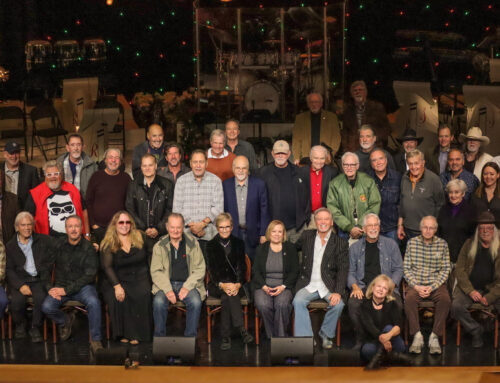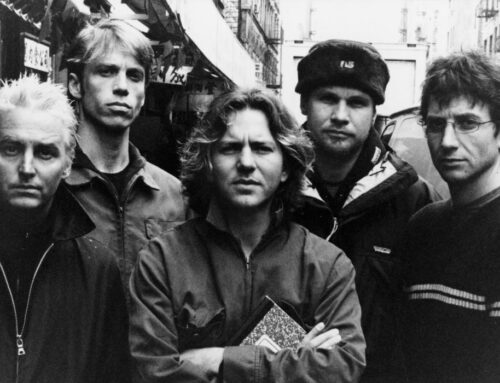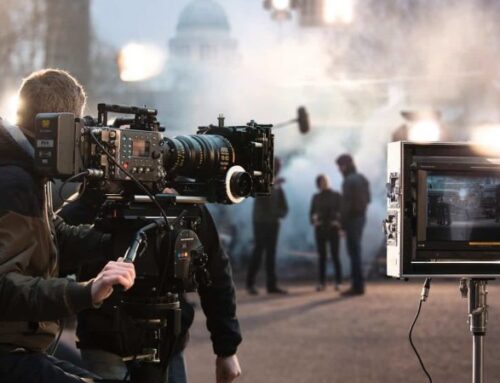One question clients often asked me is whether an idea can be protected. The question frequently arises when a client has an idea for a screenplay, or an outline for a story, or a unique title for a song or book, and wishes to submit or “pitching” that idea to a major movie house, publisher or record company. While it is fairly common knowledge that an “idea” cannot be copyrighted, it is important to know that there may be certain types of protection be available for the intellectual properties contained in such a proposal pursuant to current laws, specifically trademark and copyright laws. This article analyzes and summarizes your rights under each of these two areas of law and offers suggestions for protecting your legal rights when “pitching” ideas.
Protection Under Trademark Law
Titles and names may be entitled to trademark protection at both the state and federal levels by anyone claiming a right to use such a title or name in connection with certain specified trades or services. These types of marks are commonly designated by use of the “™” and “®” symbols, indicating respectively that registration of the mark has been applied for and registered on the Primary Register. To be entitled to use these symbols in respect to a mark, a person must apply for and receive a federal or state trademark.
In most states, a state trademark can be applied for in the Secretary of State’s office. The application is a simple form and payment of a nominal fee is required. Protection at the state level is, however, somewhat more geographically limited than that of a federal mark. The application process for a federal mark is much more tedious, complicated and costly than that of the state trademark process. In addition to legal fees which will, most likely, be incurred, the application fee for each international classification of goods and services is $325.
Protection Under Copyright
As stated earlier, with regard to copyright law, and speaking very generally, an idea, in and of itself, is not entitled to copyright protection. Rather, it is the expression of an idea that can be copyrighted.[1]
It is not always clear from the case precedents, however, when an idea becomes developed enough to rise to the level of an “expression.” Some examples of expressions of ideas that have been protected are a screenplay similar to the old television series A-Team,[2] an employee survey regarding employee satisfaction,[3] and a particular section of categories appearing on a form for collecting baseball pitcher statistics.[4] On the other end of the spectrum, courts found that (1) a manual of operation for patented leaching system. [5] and (2) the addition and arrangement of facts to legal opinions [6] were not protectible expressions of ideas. The only general rule that can seemingly be extracted from this convoluted line of cases is that the more an expression diverges from the mere recitation of raw facts, the closer it gets to expression, as that the courts legally recognize that term.
Is your Idea Literary or Business in Nature
There is another, albeit tangential issue which is relevant and should be briefly discussed here, i.e., whether an idea is literary or business in nature:
Literary ideas are those that, upon development, would become literary property and hence clearly eligible for copyright protection. Literary ideas include ideas for motion pictures,[7] radio programs,[8] and television programs.,[9]
Business ideas, on the other hand, even when fully developed, may not be copyrightable. ,[10] Business ideas are those that relate to methods of conducting businesses, such as bank night in theaters,[11]contests, [12]and credit rating systems.[13] Here again, however, the more an idea, even a business idea, departs from mere factual recitation, the more it is likely to be considered literary, and therefore entitled to protection under copyright law.
When does an idea rise to the level of expression?
So, let’s now return to the primary issue of when an idea rises to the level of an expression entitled to copyright protection?
In their attempts to deal with the dilemma, courts have created a body of case law which attempts to strike a middle ground between the comprehensive protection of copyright on the one hand, and the complete denial of any legal protection for ideas on the other. I will attempt to delineate and evaluate some of the legal theories on which a person may be able to rely to render an idea legally protectible, the underlying tort theory of which is known in legal circles as “idea misappropriation.”
In brief, the elements for a claim of idea misappropriation are, first, the idea must be novel and concrete, and, second, there must be a legal relationship between the parties, whether by an express contract, a contract implied-in-fact, a quasi-contract, or a fiduciary relationship.[14]
Novel & Concrete Element
In instances where they have dealt with the protectibility of an idea, the courts hold the plaintiff to a greater burden of proving not merely that the idea is original (as in copyright protection) but that it is actually novel,[15] i.e., “not formerly known; of a new kind.”[16] This standard is, for most courts, a great standard to meet than that required by copyright, i.e., that a work be original – although some courts do confusingly use the terms interchangably.
The second component of the first prong, “concreteness,” in essence requires that an idea be sufficiently developed so as to constitute “property.” By its very nature, this requirement is intentionally vague, allowing the courts great flexability in applying it. One court described the concept as follows
while we recognize that an abstract idea as such may not be the subject of a property right, yet when it takes upon itself the concrete form which we find in the instant case, it is our opinion that it then becomes a property right subject to sale.[17]
This is, as pointed out, a rather vague element. This is sort of like how U.S. Justice Potter Stewart described hard-core pornography in Jacobellis v. Ohio, i.e., it’s difficult to define, but “I know it when I see it.” So, in short, the more developed an idea becomes, the further it goes toward dispelling any doubt as to whether the idea is “concrete.”
Legal Relationship Requirement
The second prong of the test, i.e., the legal relations prong, can complicate matters when it comes to submitting an idea to a third party. Whether a legal relationship exists between the parties depends, as does everything in law, on countless fact scenarios to the degree that one small change in a fact pattern can affect the outcome of interpretation.
Most often, clients “pitch” their ideas to a third parties for consideration in hopes that they will take the idea and “run with it.” But in such instances, it is important to be aware that the method by which an idea is submitted can directly impact whether or not there is a legal relationship.
A non-disclosure and confidentiality agreement with a publisher, for example, would create such a relationship beyond any doubt. This is one end of the spectrum. This method can easily be dispensed with since it is difficult enough to get a publisher’s attention, for example, much less without the added complexity of having to get their legal department involved. Most people will likely submit the idea directly to a publisher, either with or without permission, without any such NDA, or they will submit the idea through an agent of some sort. Each of these variations result in different treatment.
For example, courts have held that if an idea is submitted without solicitation and without advance warning, the idea is not protectible, even if it later turns out to be valuable.[18] There is one variation of this fact pattern, however, where one might successfully argue that an implied contract results because of an implied solicitation by the idea recipient. This occurs where the recipient is engaged in a trade or industry (such as the entertainment or publishing industry) that, by custom, purchases ideas of the type submitted. A book or music publisher, as an idea recipient, makes a continuing offer to pay for any submitted ideas that it elects to use. Thus, an unsolicited submission is not an offer that necessarily requires further conduct by the publisher to establish an acceptance, but rather can be viewed as an acceptance of the publisher’s implied continuing offer. Although no court has expressly recognized this theory, courts have implicitly adopted it by recognizing an implied agreement based upon custom where such a factual pattern can be established.[20] I caution in advance, however, that this is a minority opinion, not expressed by the majority of courts.
Some courts, particularly but not exclusively those in California, imply an affirmative duty on the part of a publisher to reject an unsolicited submission or else the legal relationship is created – hence the practice of most publishers to advertise “no unsolicited submissions.” Under this so-called “failure to reject” theory, any means of notice that gives the publisher some sort of advance warning of, and an opportunity to prevent, a proposed idea submission is sufficient to establish an implied contract if the recipient then permits the submission to be made.
Thus, the following examples may create such an affirmative obligation on the part of the publisher: (1) enclosing the proposed idea in a sealed envelope accompanying an unsolicited transmittal letter that explains that the contents of the sealed envelope contains such a submission, or (2) a series of two unsolicited letters, the first explaining the intended submission and the second in fact containing the idea to be submitted. [20]
If a publisher specifically requests the submission of an idea, a legal relationship is clearly established creating an obligation to pay the creator if the idea submitted is used. [21] So finding a creative way to solicit a request from a publisher is also a very good means of securing protection for you idea.
Finally, it may come as no surprise that utilizing the services of a agent will help protect your ideas. It may be inferred that the recipient of an idea submission has knowledge of an expectation of payment for the idea when the submission is arranged by a person whose known occupation is that of representing idea purveyors, such as a book or movie agent. “This fact alone must have indicated to [the recipient of an idea submission] that the persons whom the agent brought together with him were not social callers.” Donahue v. Ziv Television Programs, Inc. 54 Cal. Rptr. 130, 138 (Cal. App. 1966).
Conclusion
As you can clearly see, the question of whether an idea can be protected is not an easy one to answer in any specific situation because the answer depends so heavily on the individual fact pattern of each case. Although it may not be apparent from its length, this article in no way exhausts the body of legal information and case law that exists with regard to the protectible nature of an idea. Therefore, if you have questions concerning this issue, please contact a respected entertainment attorney.
Having stated this, with regard to submission of ideas in general, the following are recommendations that can be followed:
(1) First, trademark all slogans, titles or name, at the very least your state level, but preferably at the federal level;
(2) Make sure the idea is as fleshed out as it can be, i.e. as “concrete” as possible. Rather than a mere outline, insert summaries of each bullet point. Then, flesh out selected points, e.g., create a summary of each chapter of a particular example book, or maybe even two or more examples of each. Then, create a few complete chapters of a books, for example;
(3) Mark everything confidential and, in addition to the copyright notice generally included, add the phrase “All rights reserved” after it. The copyright notice and your intent to be the owner of the copyright should be clearly indicated in the beginning of the correspondence;
(4) Attempt to procure an agent, and ask if the agent is willing to enter into a non-compete and confidentiality agreement;
(5) As an alternative to paragraph (4), solicit the publishers by telephone or in some other general fashion, preferably with written followup, to encourage them to “solicit” the work in advance; and
(6) As an alternative to paragraphs (4) and (5), place your idea submission in an envelope, draft a summary cover letter explaining that this is the submission of a copyrighted idea and that by opening the envelope, they are agreeing to the confidentiality and non-disclosure of the submission and further, agree to pay for it if they decide to use it.
While these ideas may not be “iron-clad,” they will go a long way toward establishing the necessary elements of an idea misappropriation claim.
[1] 17 U.S.C. § 102(b) . See e.g., Holmes v. Hurst, 174 U.S. 82 (1899); Kalem Co. v. Harper Bros., 222 U.S. 55 (1911) ; Dymow v. Bolton, 11 F.2d 690 (2d Cir. 1926) ; Nichols v. Universal Pictures Corp., 45 F.2d 119 (2d Cir. 1930) ; Dellar v. Samuel Goldwyn, Inc., 150 F.2d 612 (2d Cir. 1945) ; Gaye v. Gillis, 167 F. Supp. 416 (D.C. Mass. 1958 ). This was also the rule under common law copyright. Fendler v. Morosco, 253 N.Y. 281, 171 N.E. 56 (1930) ; Weitzenkorn v. Lesser, 40 Cal.2d 778, 256 P.2d 947 (1953) ; Desny v. Wilder, 46 Cal.2d 715, 299 P.2d 257 (1956) ; Ware v. Columbia Broadcasting Sys., Inc., 61 Cal. Rptr. 590, 155 U.S.P.Q. 413 (Cal. App. 1967).[Back]
[2]Ernest Olson, V. National Broadcasting Company, Inc., 855 F.2d 1446 (9th Cir. 1988).[Back]
[3]Gallup, Inc. V. Talentpoint, Inc., 2001 U.S. Dist. LEXIS 18560; 61 U.S.P.Q.2D (BNA) 1394 (M.D. PA. 2001).[Back]
[4]George L. Kregos v. Associated Press and Sports Features Syndicate, Inc., 937 F.2d 700; 1991 U.S. App. Lexis 12113; 19 USPQ2d (BNA) 1161; Copy. L. Rep. (Cch) P26,744 (Ct. App. 2nd Cir. 1991).[Back]
[5]Presby Construction, Inc., v. Normand Clavet, et al, 2001 DNH 210; 2001 U.S. Dist. LEXIS 20951; 61 U.S.P.Q.2D (BNA) 1184 (Dist. NH 2001).[Back]
[6]Matthew Bender & Company, Inc., et al v. West Publishing Co. et al, 158 F.3d 674; 1998 U.S. App. LEXIS 30790; 48 U.S.P.Q.2D (BNA) 1560 (App. Ct. 2nd Cir 1998). [Back]
[7]Desny v. Wilder, 46 Cal.2d 715, 299 P.2d 257 (1956).[Back]
[8]Stanley v. Columbia Broadcasting Sys., 35 Cal.2d 653, 221 P.2d 73 (1950).[Back]
[9]Stone v. Goodson, 8 N.Y.2d 8,200 N.Y.S.2d 627 (1960).[Back]
[10]This exclusion also applies to scientific ideas.[Back]
[11]Affiliated Enterprises, Inc. v. Gruber, 86 F.2d 958 (1st Cir. 1936).[Back]
[12]Lewis v. Kroger, 109 F. Supp. 484 (S.D. W.Va. 1952).[Back]
[13]Burnell v. Chown, 69 Fed. 993 (N.D. Ohio 1895).[Back]
[14]See Kienzle v. Capital Cities/American Broadcasting Co., Inc. , 774 F. Supp. 432, 436 n.8, 438 n.13 (E.D. Mich. 1991) (Treatise cited). McGhan v. Ebersol, 608 F. Supp. 277, 284 (S.D.N.Y. 1985) (New York law). [Back]
[15] Noble v. Columbia Broadcasting Sys., 270 F.2d 938 (D.C. Cir. 1959) ; Santilli v. Philip Morris & Co., 283 F.2d 6 (2d Cir. 1960) ; Stevens v. Continental Can Co., Inc., 308 F.2d 100 (6th Cir. 1962) ; Pittman v. American Greeting Corp., 619 F. Supp. 939 (W. D. Ky. 1985) ; Downey v. General Foods Corp., 31 N.Y.2d 56, 286 N.E.2d 257 (1972) (no promise to pay for an idea will be implied or enforced if the idea is not both novel and original).[Back]
[16]Webster’s New Int’l Dictionary (2d ed.) 1670.[Back]
[17]Williamson v. N.Y. Central R.R., 16 N.Y.S.2d 217, 258 App. Div. 226 (1939) ; Bailey v. Haberle-Congress Brewing Co., 193 Misc. 723, 85 N.Y.S.2d 51 (1948 ) ; Masline v. New York, New Haven and Hartford R.R., 95 Conn. 702, 112 Atl. 639 (1921) ; contra Brunner v. Stix, 352 Mo. 1225, 181 S.W.2d 643 (1944).
[18] Giangrasso v. CBS, Inc., 534 F. Supp. 472 (E.D.N.Y. 1982) ; Curtis v. United States, 168 F. Supp. 213 (Ct. Cl. 1958), cert. denied, 361 U.S. 843 (1959) ; see Borden & Barton Enters. v. Warner Bros., 99 Cal. App. 2d 760, 222 P.2d 463 (1950) ; Donahue v. Ziv Television Programs, Inc., 54 Cal. Rptr. 130 (Cal. App. 1966) ; Official Airlines Schedule Info. Serv., Inc. v. Eastern Air Lines, Inc., 333 F.2d 672, 674 (5th Cir. 1964) (concurring opinion); Sterner v. Hearst Corp., 144 U.S.P.Q. 237 (N.Y. Sup. Ct. 1964) .[Back]
[19]Desny v. Wilder, 46 Cal. 2d 715, 739, 299 P.2d 257, 270 (1956) ; Aliotti v. R. Dakin & Co., 831 F.2d 898, 903 (9th Cir. 1987).[Back]
[20] Cole v. Lord, 262 A.D. 116, 28 N.Y.S.2d 404 (1st Dep’t 1941) ; Kurlan v. Columbia Broadcasting Sys., 40 Cal. 2d 799, 256 P.2d 962 (1953) ; Vantage Point, Inc. v. Parker Bros., Inc., 529 F. Supp. 1204 (E.D.N.Y. 1981) (Treatise cited), aff’d mem., 697 F.2d 301 (2d Cir. 1982); Bevan v. Columbia Broadcasting Sys., Inc., 329 F. Supp. 601 (S.D.N.Y. 1971) (Treatise cited); cf. McGhan v. Ebersol, 608 F. Supp. 277, 285 (S.D.N.Y. 1985) (New York law); Bailey v. Haberle Congress Brewing Co., 193 Misc. 723, 85 N.Y.S.2d 51 (Mun. Ct. 1948).[Back]
[21] See, e.g., Whitfield v. Lear, 751 F.2d 90 (2d Cir.) , where in advance of submission, plaintiff sent a mailgram to defendants advising that a submission was being sent.[Back]





